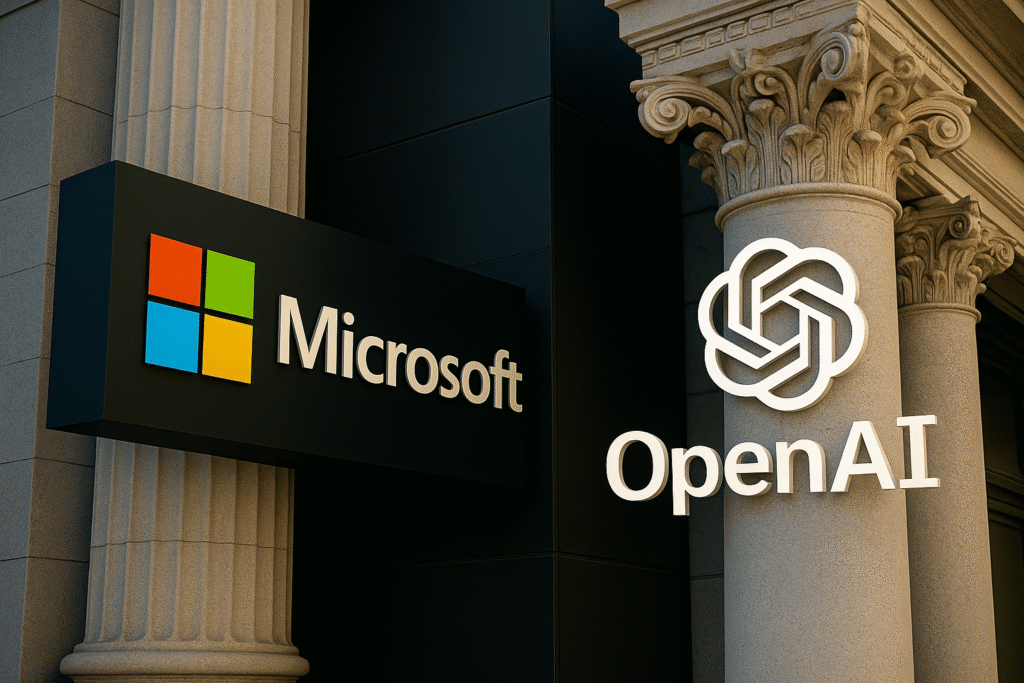Exxon Steps Into the AI Power Race
As Big Tech scrambles to fuel the world’s AI boom, Exxon Mobil is positioning itself at the center of a new kind of energy revolution — one that blends natural gas reliability with carbon capture technology.
On Friday’s earnings call, CEO Darren Woods confirmed that Exxon is in advanced discussions with major power providers and tech companies to supply data centers with electricity from natural gas plants designed to trap and store carbon emissions before they reach the atmosphere.
“We’re pretty advanced in the conversations,” Woods said, adding that the company’s goal is to capture 90% of CO₂ emissions from these power systems.
The initiative could reshape how hyperscalers — like Alphabet (GOOGL), Amazon (AMZN), Meta (META), and Microsoft (MSFT) — approach clean energy for their AI infrastructure.
Why Exxon’s Strategy Matters
AI data centers are now the single fastest-growing source of power demand in the U.S., with energy use projected to double by 2030, according to recent industry data.
While tech companies have historically leaned on renewables like wind and solar to offset emissions, the surge in 24/7 AI workloads is forcing a rethink:
- Renewable energy isn’t always available when data centers need it most.
- Nuclear projects remain years away from deployment at scale.
- Natural gas remains the most reliable source of continuous power — but carries a carbon cost.
That’s where Exxon comes in.
“We’re probably the only realistic game in town to accomplish near-term low-emission operations,” Woods said, emphasizing the company’s existing infrastructure and expertise in carbon capture, transport, and storage.
How the Model Works
Exxon’s proposal centers on building or partnering with natural gas power plants located near hyperscale data center hubs — particularly in Texas, Louisiana, and the Gulf Coast, where both pipeline infrastructure and storage basins for captured CO₂ already exist.
Each plant would integrate carbon capture units that extract carbon dioxide directly from exhaust streams, compress it, and pipe it underground into long-term storage reservoirs.
By coupling power reliability with carbon removal, Exxon’s plan could deliver a “net-lower” emissions solution — appealing to tech firms under increasing scrutiny for the environmental footprint of AI.
A Shift in the AI Energy Landscape
The AI boom has triggered an unprecedented energy scramble:
- Meta recently inked a deal with Entergy (ETR) in Louisiana to power its data centers using natural gas — signaling a shift away from pure renewables toward reliability-first strategies.
- Microsoft and Amazon are exploring nuclear partnerships to sustain long-term AI growth.
- Google continues to pursue “carbon-free by 2030” goals but has acknowledged that intermittency challenges limit renewable-only operations.
In this context, Exxon’s carbon-captured gas power could serve as the bridge technology between fossil reliability and future clean grids.
The Bigger Picture: Energy, AI, and Policy
This potential partnership underscores a broader realignment between energy producers and AI infrastructure builders.
Exxon — once seen as a traditional oil and gas major — is recasting itself as an energy logistics company for the digital age, integrating carbon management, storage, and industrial-scale power generation.
With data center expansion projected to add tens of gigawatts of new demand globally over the next five years, the AI revolution could accelerate both carbon capture adoption and energy diversification.
However, skeptics caution that large-scale carbon capture remains expensive and technically complex, with only a handful of successful commercial deployments worldwide.
Still, Exxon’s scale, storage assets, and Gulf Coast infrastructure give it an advantage few can match.
WSA Take
The energy race behind AI is becoming just as strategic as the chips themselves.
While Nvidia and AMD dominate the hardware arms race, Exxon is quietly moving to power the infrastructure backbone — offering tech giants a pragmatic path to “cleaner” reliability through carbon-captured gas.
If successful, this could cement Exxon as the energy partner of the AI era, bridging old-world hydrocarbons with next-generation computing.
Read our coverage of Tech’s $380 Billion AI Buildout.
Explore the latest industry coverage on the Wall Street Access homepage.
Disclaimer:
Wall Street Access does not work with or receive compensation from any public companies mentioned. Content is for informational and educational purposes only.








